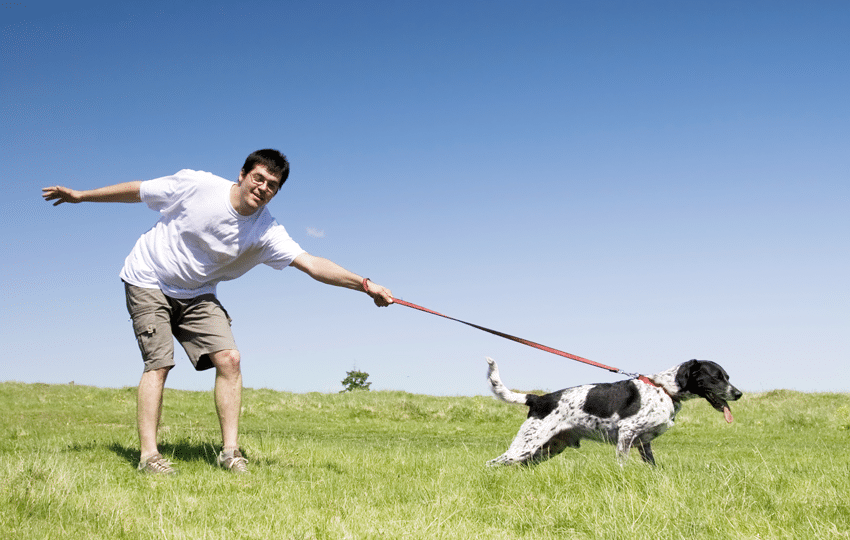10 Simple Steps to Stop Pulling on Walks: Master Dog Leash Training
Leash training is an essential part of dog ownership. It is important for ensuring the safety of your pet and for teaching them basic obedience skills. It can also help to build a positive relationship between you and your pup. So, if you are a dog owner and want to learn how to leash train your pup, read on!
Introduction to Dog Leash Training
Leash training is the process of teaching your pup to walk on a leash without pulling. It is important for maintaining control over your pup when you’re out and about and for teaching them basic obedience commands. You can begin leash training as early as 8 weeks of age, but it is important to start early so that your pup can learn quickly and easily.
Leash training can be a challenge, especially if you have an active pup who tends to pull and get distracted. But, with the right approach and techniques, you can master leash training in no time.
Why Leash Training is Important
Leash training is important for many reasons. First, it helps keep your pup safe when you are out and about. A well-trained pup will stay close to you and not wander off or run into dangerous situations.
Second, it can help you maintain control over your pup and prevent them from misbehaving or chasing after things they shouldn’t. Finally, leash training can help you build a positive relationship with your pup. Learning how to stay by your side and obey commands will make them trust you more.
When to Start Leash Training
It is best to start leash training as early as possible, as young puppies are more likely to learn quickly and easily. However, it is important to keep in mind that puppies are still developing, so it’s important to take things slowly and be gentle.
Ideally, you should begin leash training when your pup is 8 weeks old. This is when they will have the most energy and enthusiasm to learn. Of course, you can start later if you wish, but it may take longer for your pup to learn the skills.
How to Train a Dog to Walk on a Leash Beside You
The first step in leash training is teaching your pup to walk beside you on the leash. This will help your pup learn to stay close to you and obey commands. Here are some tips for teaching your pup to walk beside you on the leash:
- Start by walking your pup on a short leash in a quiet and enclosed area. This will help them to focus on you instead of getting distracted.
- Whenever your pup pulls on the leash, stop walking and stand still. This will teach them that pulling is not acceptable.
- Praise your pup when they stay by your side and reward them with treats. This will encourage them to keep walking beside you.
- If your pup gets distracted, gently redirect them back to you and keep walking.
- Gradually increase the length of the leash as your pup learns how to stay close to you.
How to Train a Dog to Walk on a Leash Without Pulling
The next step in leash training is teaching your pup to walk without pulling. This will help your pup learn to stay calm and focused when on the leash. Here are some tips for teaching your pup to walk on a leash without pulling:
- Start by walking your pup on a short leash in a quiet and enclosed area.
- Whenever your pup pulls on the leash, stop walking and stand still.
- When your pup stops pulling, give them a treat and praise them.
- If your pup gets distracted, gently redirect them back to you and keep walking.
- As your pup gets better at walking without pulling, gradually increase the length of the leash.
How to Train Your Dog Not to Pull on the Leash
The next step in leash training is teaching your pup not to pull on the leash. This will help your pup learn to stay calm and focused when on the leash. Here are some tips for teaching your pup not to pull on the leash:
- Start by walking your pup on a short leash in a quiet and enclosed area.
- Whenever your pup pulls on the leash, stop walking and stand still.
- When your pup stops pulling, give them a treat and praise them.
- If your pup gets distracted, gently redirect them back to you and keep walking.
- As your pup gets better at not pulling, gradually increase the length of the leash.
- When your pup pulls on the leash, give them a gentle tug or use a command such as “No” or “Let’s go”.
- Praise your pup when they stop pulling and reward them with a treat.
Using Positive Reinforcement Techniques
Positive reinforcement is an important part of leash training. It is important to reward your pup for good behavior and discourage bad behavior. Here are some tips for using positive reinforcement techniques:
- Give lots of praise and rewards to your pup when they do something right.
- Avoid punishing your pup when they make a mistake. Instead, redirect their attention to something else.
- Use verbal commands and hand signals to help your pup understand what you want them to do.
- Keep the training sessions short and fun to ensure your pup stays interested.
Avoiding Common Mistakes
Leash training can be a challenge, so it is important to avoid common mistakes. Here are some tips for avoiding common mistakes:
- Don’t rush the process. Leash training takes time, so be patient and give your pup lots of praise and rewards.
- Don’t use choke collars or other aversive training tools. These can cause pain and distress to your pup and can lead to more serious behavior problems.
- Don’t allow your pup to pull on the leash. This will only reinforce the bad behavior.
- Don’t over-correct your pup. This can lead to confusion and can cause your pup to become fearful or anxious.
10 Simple Steps to Master Dog Leash Training
Now that you know how to leash train your pup, here are 10 simple steps to master dog leash training:
- Start leash training as early as possible, preferably 8 weeks of age.
- Walk your pup on a short leash in a quiet and enclosed area.
- Whenever your pup pulls on the leash, stop walking and stand still.
- Give your pup lots of praise and rewards when they do something right.
- Use verbal commands and hand signals to help your pup understand what you want them to do.
- When your pup pulls on the leash, give them a gentle tug or use a command such as “No” or “Let’s go”.
- Gradually increase the length of the leash as your pup learns how to stay close to you.
- Keep the training sessions short and fun to ensure your pup stays interested.
- Don’t rush the process. Leash training takes time, so be patient and give your pup lots of praise and rewards.
- Avoid using choke collars or other aversive training tools.
Conclusion
Leash training is an important part of dog ownership. It is important for keeping your pup safe when you are out and about and for teaching them basic obedience skills. With the right approach and techniques, you can master leash training in no time.
By following these 10 simple steps, you can easily teach your pup to walk on a leash without pulling and stay close to you. And, you can also build a positive relationship with your pup as you train them. So, get started today and master dog leash training in no time!


